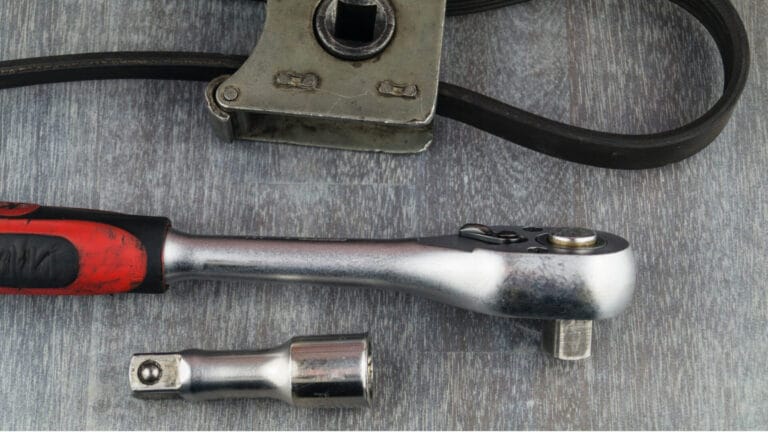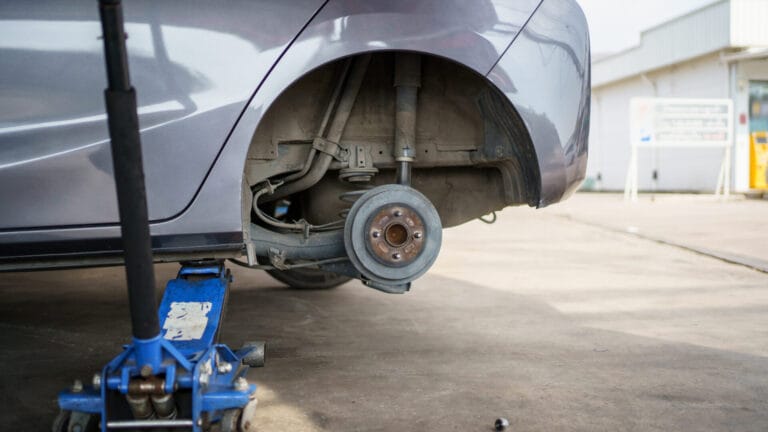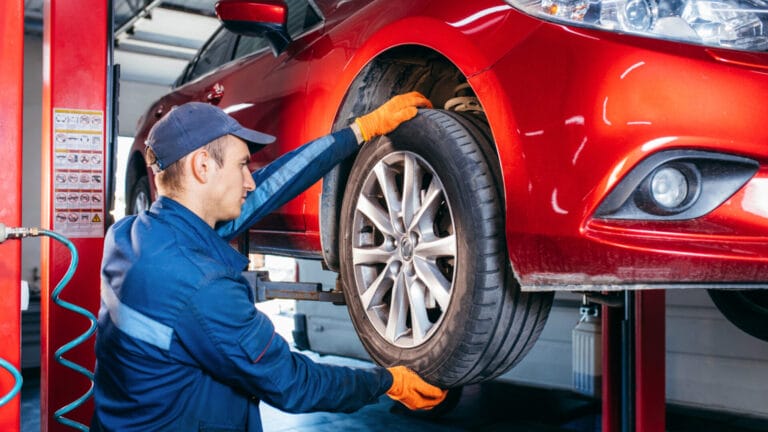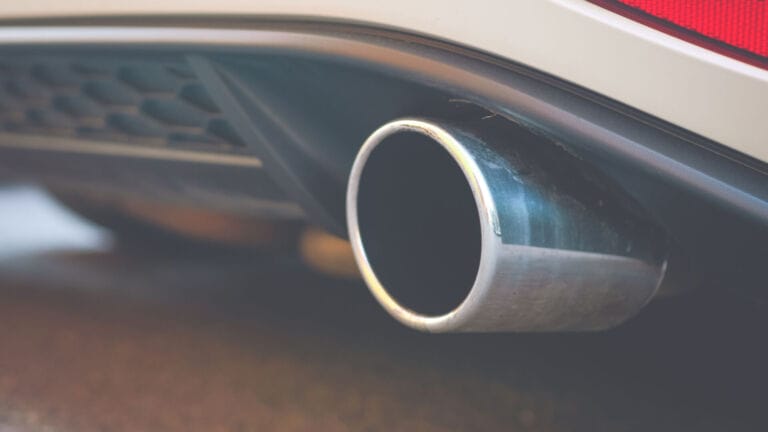Can You Jack Your Car Up on a Sloped Driveway
Imagine your driveway, where the road seems to have a mind of its own, rising and falling like a rollercoaster. It’s a scenario many car owners face. So, can you jack up your car on this undulating terrain? The answer is a cautious “yes” with a dose of common sense.
Jacking up your car on a sloped driveway is a task that demands careful consideration and, in some cases, should be approached with caution. The feasibility of this operation largely depends on the slope’s gradient, your car’s make and model, and your own level of expertise.
Yes, you can jack your car up on a sloped driveway if the slope is not too steep and the ground is stable and level enough to support the weight of the car.
Additionally, you have to take some precautions, like using wheel chocks or blocks on the downhill side of the car, jack stands for added stability, matching the car’s frame or designated lifting points, following proper lifting techniques, and consulting your car’s manual.
However, if your driveway has a severe incline, you should avoid jacking up your car there.
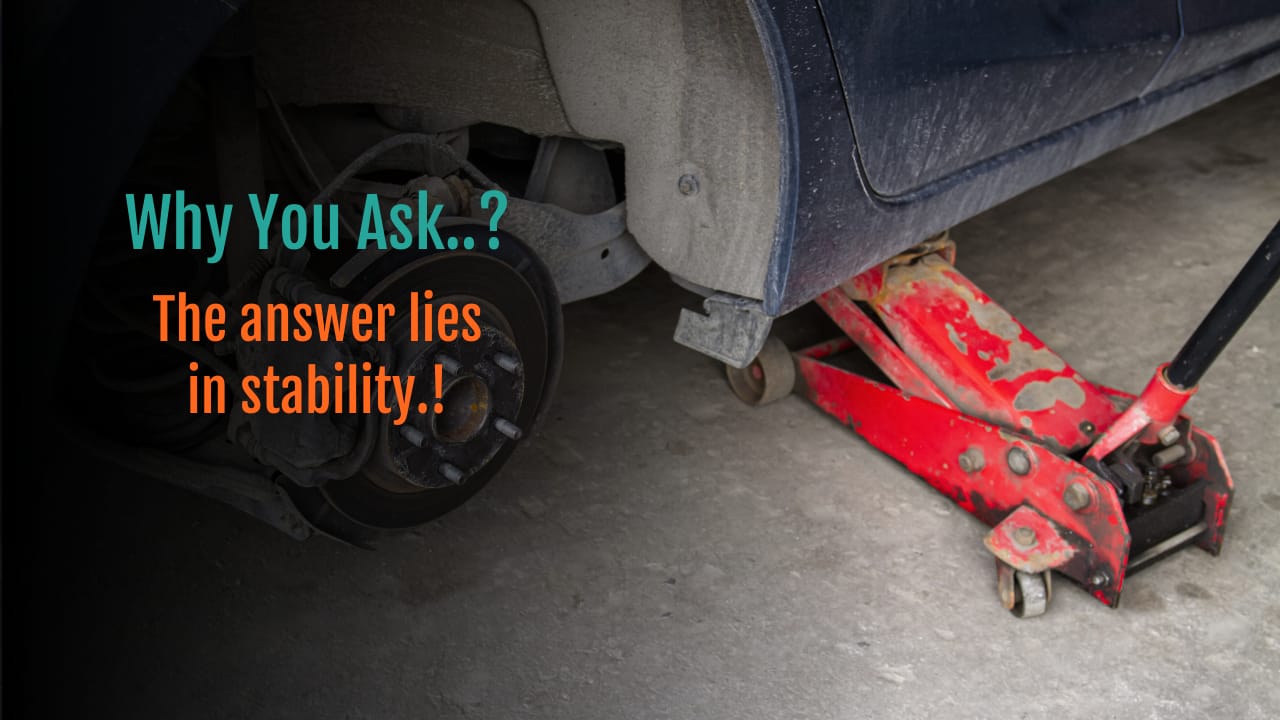
A steep incline can turn even the simplest car maintenance task into a high-stakes tightrope act. Your vehicle might shift, the jack could topple, and the risk to your safety and your car’s well-being skyrockets. In these circumstances, opting for a flat, level surface for your maintenance endeavors is a safer bet. It will ensure your passion for cars doesn’t collide with unnecessary risks. Remember to prioritize safety above all else.
How To Jack Your Car Up On A Sloped Driveway
Understanding the process of jacking a car on a slope is valuable for car enthusiasts, but it should be exercised with caution and expertise.
So, I will share a few simple steps to help you jack your car up on a sloped driveway without inviting chaos and calamity. Let’s unveil the secrets and strategies and confidently revel in your passion.
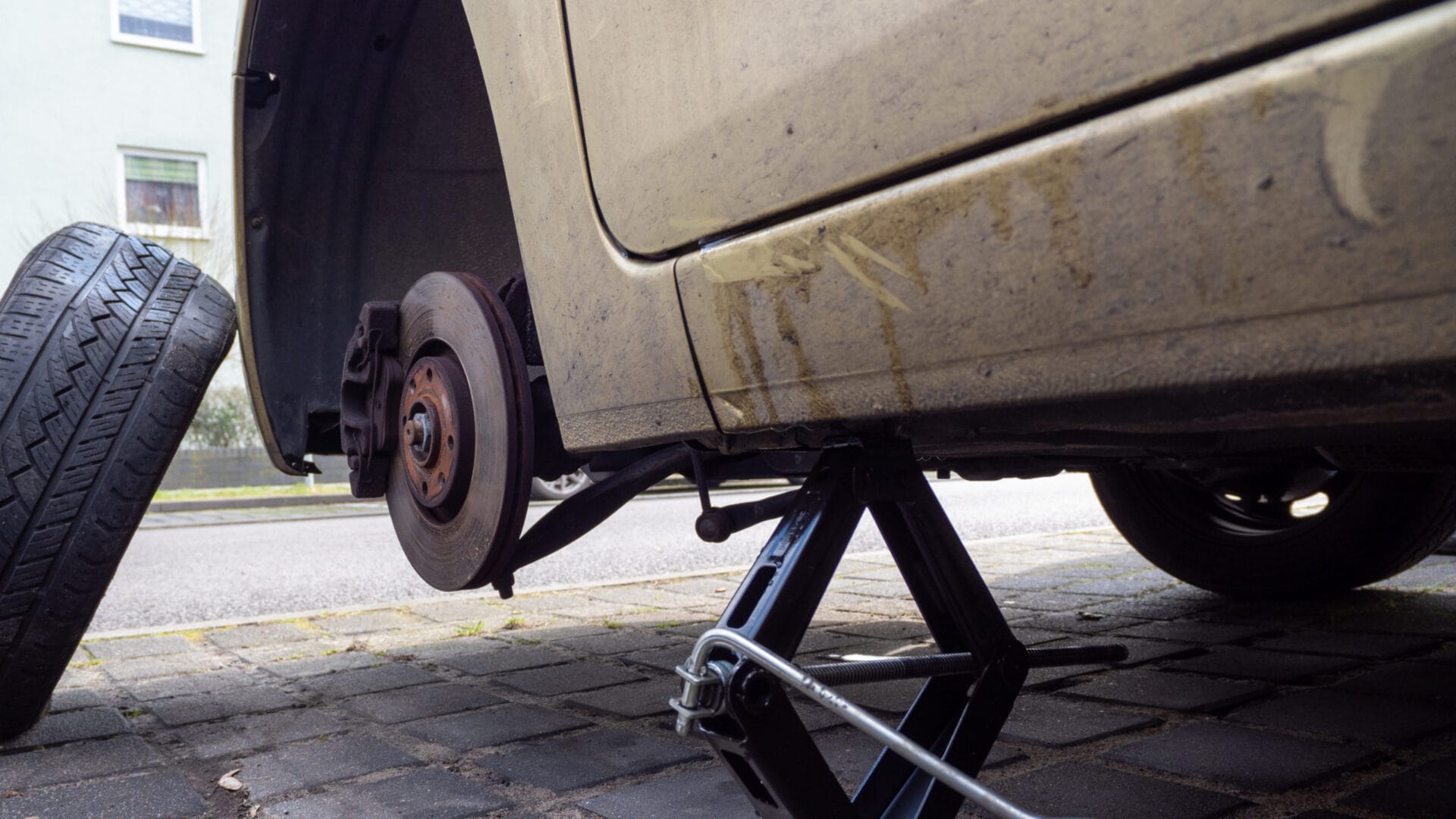
Step 1: Choose the Right Jack
Begin with the right tool for the job. Think of it like selecting a paintbrush for a masterpiece. Different jacks have different capabilities, so choosing the right one to handle the slope angle without compromising stability is essential. Select a jack, especially considering the terrain type and, of course, other essential things. Hydraulic jack, scissor jack, and floor jack are common choices.
Step 2: Identify Suitable Jacking Points
Now, just like a skilled artist knowing where to apply the brush, consult your car’s manual to locate the manufacturer’s recommended jacking point. Jack’s point will be the stable foundation for your work. These points are usually marked on the vehicle’s underside and provide the safest and most stable areas for jacking. When jacking on a slope, you must be even more diligent about placing the jack correctly to maintain balance.
Step 3: Prepare the Workspace
Once you have identified where you will be working, it’s time to prep the area. Think of it as clearing the clutter from your artist’s studio. Clear the area of any debris, obstacles, or potential hazards that could interfere with your work or the vehicle’s stability. Also, make sure the ground is not soft or prone to shifting.
Step 4: Secure Your Vehicle
Before you start, ensure that your vehicle is parked securely, with the transmission in “Park” (for automatic) or in gear (for manual). Engage the parking brake to prevent any rolling.
Step 5: Position the Jack
Securely position the car parallel to the slope rather than perpendicular. This will ensure that the car’s weight is distributed evenly and minimize the risk of accidents.
Next, place the wheel chock on the downhill side of the tires to prevent any rolling. The chock will act as a barrier, providing stability and preventing the car from moving unexpectedly. It’s essential to use wheel chocks designed explicitly to ensure maximum safety.
Step 6: Lift Your Vehicle
Once you have positioned the car correctly and secured the wheelchocks, lift the vehicle slowly and steadily. Take your time with each step and check the vehicle’s stability regularly. Stop immediately and reassess the situation if you notice any signs of instability. It’s essential to be cautious and proceed with care to ensure your safety and the car’s integrity.
Step 7: Use Jack Stands
Once your car is at the desired height, place the jack stands under the recommended jacking points. Never work under a vehicle supported only by a jack. Jack stands are a must for safety. Remember, a jack is designed for lifting and lowering the car, not for supporting it during maintenance. Jack stands are designed to provide an extra layer of safety and support the vehicle if the tongue jack fails.
Step 8: Begin Maintenance
With your car safely supported on this incline canvas, you can now begin your automotive masterpiece – your maintenance or repair tasks. Follow best practices and safety protocols as you work.
Step 9: Lower the Vehicle
When you’ve completed your maintenance tasks, carefully reverse the process: remove the jack stands, lower the car slowly, and then remove the jack.
Step 10: Final Safety Checks
Double-check the stability of the vehicle on the slope. Ensure it’s securely parked before removing any additional supports or chocks, just like ensuring your artwork is well-preserved.
Is It Safe To Jack Your Car Up On a Sloped Driveway?
Stability is the main thing for jacking a car up, which is limited on a sloped surface compared to a flat one. Using jack stands on a sloped surface is risky, as the vehicle can shift or roll, parking brakes are inadequately supported, weight distribution is uneven, and jack stands can sink. But with the proper precautions, suitable jacking equipment, and following the correct method, you can safely jack your car up on a sloped driveway.
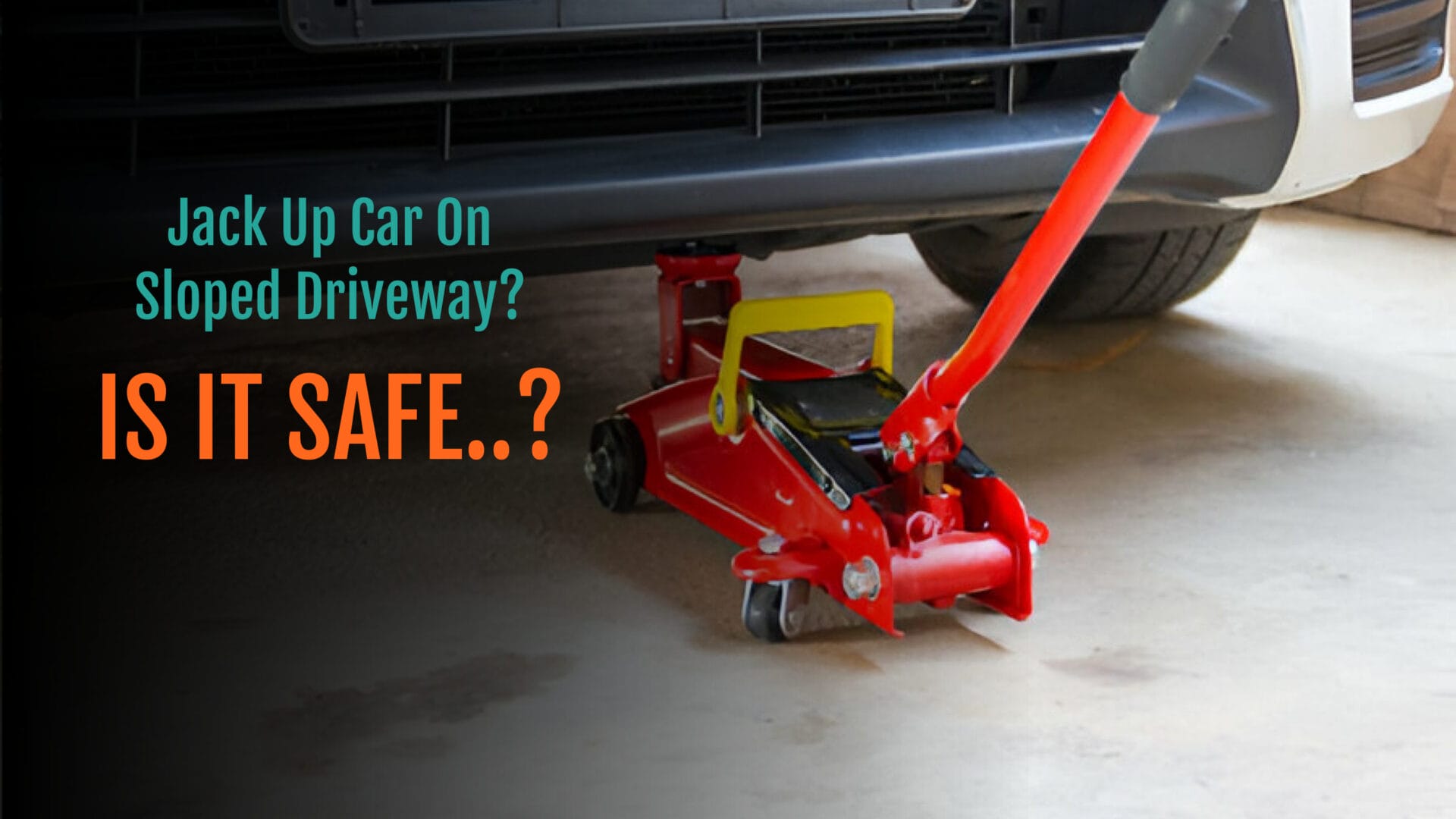
So, if you’re not confident or uncomfortable, seek professional help or use a flat, level surface whenever possible. Safety and precision are your trusted co-pilots in this journey, so always prioritize them.
Potential Risks Of Jack Up Your Car On a Sloped Driveway
There are several risks and challenges when jacking up a car on a sloped driveway.
- Sloped driveways can cause the car to roll or shift, posing a severe danger while working underneath the vehicle. The parking brakes alone may not be sufficient to keep the car securely in place on an incline.
- When a car is positioned on a slope, the weight is not evenly distributed across all four wheels. This increases the load on the rear wheel and strains the jack, making it unstable when lifted.
- Uneven ground can cause instability, and the jack may sink into soft or uneven surfaces, which can damage the vehicle itself and lead to accidents and further damage to the car.
- Jack stand can also slip into soft or uneven surfaces due to the natural incline of the driveway. It makes it easier for the vehicle to roll, even with the parking brake engaged.
- Working on a sloped surface can be physically demanding, increasing the potential for slips, trips, and other accidents while carrying out maintenance tasks.
Is It Safe to Use a Jack on a Sloped Driveway?
Using a jack on a sloped driveway can be risky if not done correctly. The key lies in understanding the importance of jack placement and car length. When placing the jack, position it on a firm surface, preferably a flat area. Keep in mind that the length of the car will affect stability, so ensure proper balance to prevent accidents. Caution and understanding of the jack holding car length explained are crucial for a safe experience on a sloped driveway.
Common Mistakes and Pitfalls to Avoid
When it comes to jacking your car up on a sloped driveway, there are some common mistakes and pitfalls that you should avoid. Being aware of these potential issues can ensure a safer and more effective jacking process.
- Avoid jacking up on an extremely sloped driveway, if possible. Flat or level ground is best; a little steep also works, but too steep should be avoided.
- Try to park your car as straight as possible, not at an angle on the slop.
- Never rely solely on the parking brake; it is not designed to hold the car’s weight while being lifted.
- Always use additional safety measures, such as a wheelchock or wood block, to prevent the car from rolling. Rubber chocks, race ramps, or rhino ramps can also be used.
- Avoid overloading the jack; exceeding its limit can cause it to fail or become unstable.
- Don’t rush the jacking process. Take your time to ensure that all safety precautions are followed.
- Don’t forget to double-check that everything is secure before working underneath the vehicle.
FAQ
Can you jack a car up on unlevel ground?
No, you can’t jack a car up on unlevel ground. This will result in uneven weight distribution on the rear tire, causing instability and potentially dangerous situations. Plus, there’s a risk of the jack slipping or tipping over while you’re working underneath the car.
Can I use car ramps on a sloped driveway?
Yes, you can use car ramps on a sloped driveway. A car ramp provides a slight incline, making it easier to access the underside of your vehicle for various maintenance tasks like oil changes, flat tire replacement, inspections, or brake work.
Can you use axle stands on a slope?
Yes, you can use an axle stand if the slope is not too steep. Axle stands rely on a flat and stable surface to provide secure support for your vehicle. If the surface is too steep, the weight distribution may not be even on the rear axle, making the stands less effective and potentially dangerous.
What if the car is too low to jack up?
You can use bricks or a concrete slab to increase the height and then jack up the car. You can also use drive-on car ramps, wheel ramps, scissor jacks, trolley jacks, and hydraulic jacks to jack up your vehicle.
Can I jack my car up anywhere?
No, you can’t jack up your car anywhere. You will need a flat surface that provides stability and ample space for the jack foot to maneuver around the vehicle. Using a car jack on soft or uneven ground can cause the jack to sink or shift.
Verdict
If your driveway resembles a gentle hill or a serene, rolling landscape, jacking up your car is achievable. Much like a skilled aviator, you can take flight with confidence. But what if your driveway transforms into a steep, treacherous ascent?
This is where the story takes a more cautionary turn. As you venture higher up the slope, your car and your safety teeter on the edge of uncertainty. The potential for instability and accidents looms like a storm on the horizon.
It’s a bit like navigating a turbulent sky in an aircraft not designed for such conditions. So, what do you think, should you take off? I think you already got the answer. If you are still confused, ask me through comments or email; you are always welcome to do that!

